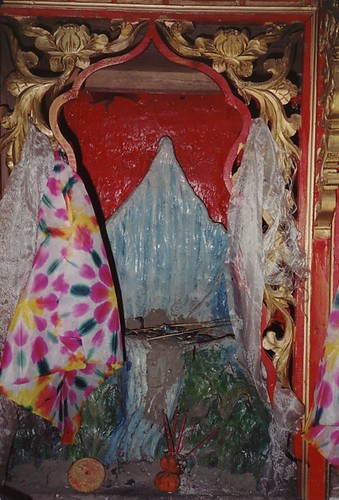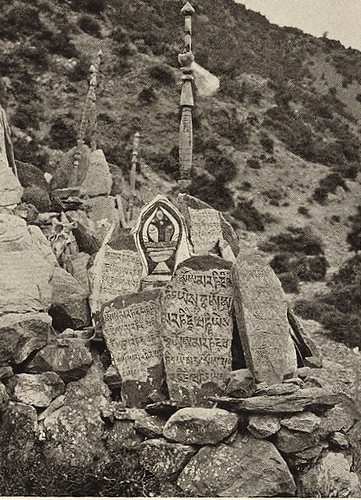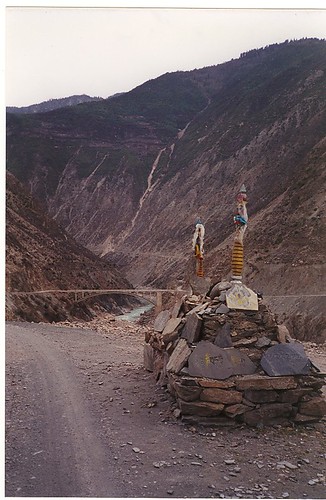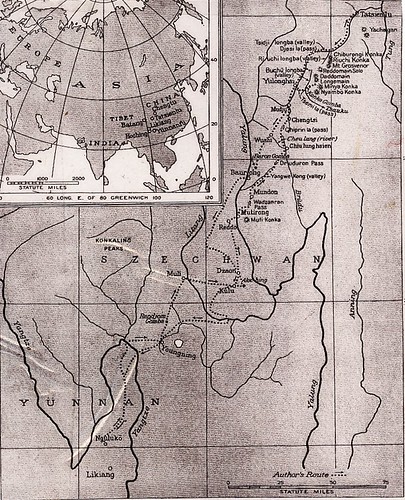This is what you see inside the Buddhist lamasery of Anjue Si, in Kangding. I think it has a very similar feeling to the picture taken by Joseph Rock, shown above.
Anjue Si is known as Ngacho Gompa in Tibetan. It is a Gelugpa temple foudn ed in 1654 as a branch of Drepung monastery in Tibet. It used to have 100 monks and the present Dalai lama stayed here on his way to see mao in Beijing in the 1950s. The assembly hall contains images of Jowo Shakyamuni flanked by his students Shariputra and Maudglayayana; Padmasambhava and Tsongkhapa. Other images include Simhanada, Manjughosa, Vajrapani, White Tara and Green Tara. On the side walls are images of the protector deities Dorke Draken, and Shridevi and Dorje Drakden. The Maitreya Hall contains an image of Maitreya. {Info from Tibetan Footprint guide]






















